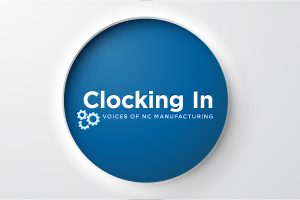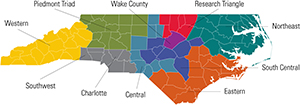What does minimizing waste mean to your organization? Producing fewer scrap parts by improving quality? Streamlining layout to reduce wasted labor? Managing supply-chain dynamics to avoid financial penalties? What about physical waste? Do you have an improvement goal for the waste you see on the plant floor?
In the early 2000’s, manufacturers began to see the relationship between their traditional concept of waste and actually physical waste. Sure, some recycled office paper, cardboard or metals. However, many were blind to what was in their dumpster. Often, what was hidden in their trash could be an indicator of up-stream opportunities or a down-stream commodity.
Early in my lean and green career, I facilitated numerous events helping manufactures SEE their waste for the first time. Just like identifying lean waste we coached clients to see dollar signs as they looked at scrap material, recyclables in the trash, or questioned their packing practices.
When I think about “a-ha” waste moments, a few examples come to mind: An upholstered furniture manufacturer in Western NC had optimized the nesting of templates for cutting out fabric per each chair and sofa design. They thought the “small” amount of fabric and stuffing material they tossed into their two large dumpsters was no big deal. After challenging their current practices, they identified recyclers for most of their scrap material and thus cut their waste disposal costs in half. Their success was supported by state tax credits and a recycling database managed by NC DEQ.
A food manufacturer in Eastern NC roasted large batches of nuts, which were then transported in super-sacks via fork-lift to be mixed with M&M’s across the plant. To protect the super-sacks filled with peanuts, an operator would lay a “slip-sheet” of cardboard on top of the pallet to reduce tearing. We noticed some pallets had 4 or 5 slip-sheets stacked on top of one another because super-sacks are fragile and expensive and cardboard is cheap right? They standardized their process to one slip-sheet per pallet, changed their behaviors and saved approximately $20,000 per year in purchasing costs.
Today, manufacturers like Bridgestone in Wilson North Carolina are setting an ever bigger example for how waste management can be a part of their continuous improvement culture. Bridgestone was the first manufacturer across the globe to be certified zero-waste-to-landfill by UL. Just like Bridgestone’s commitment to its quality system, environmental and energy management system and overall continuous improvement strategy, their waste management effort is no different. Their approach is strategic, structured, and requires commitment across the organization. Of course, this commitment has to be financially self-sustaining not just a do-good program. To date, their program succeeds at both.
Manufacturers who want to pursue zero-waste-to-landfill, have to create a custom approach. They can start by researching best practices, learning from others or connecting with state resources. In North Carolina, we have a robust recycling industry. Our state resources maintain staff and databases for manufactures to connect with recyclers and assistance programs. North Carolina even offers tax credits to purchase equipment for recycling and resource recovery. The upcoming Manufacturers Zero-Waste Conference in Wilmington is a great place to jump-start or re-energize your waste management goals for 2016.
Anna Mangum
IES Regional Manager
Service Area: Research Triangle Park
Email: anna_mangum@ncsu.edu | Phone: 919-210-6050



